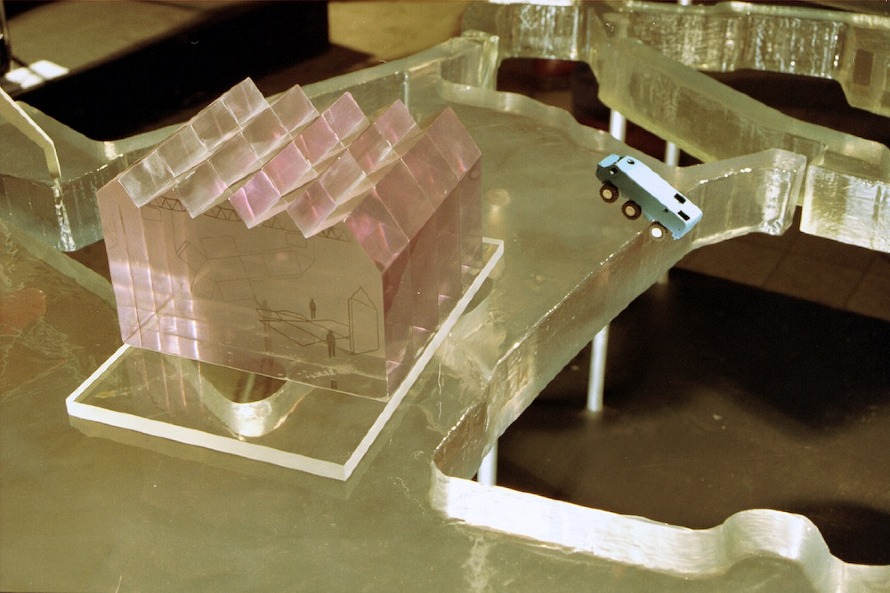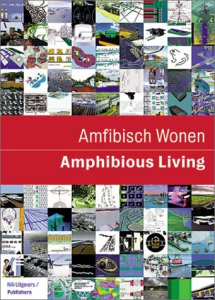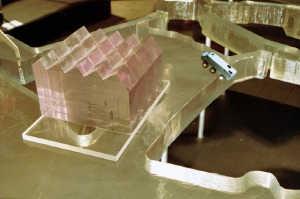Amphibious living means living on, in, close to and most especially with, water. Amphibious living is about more than just floating dwellings; it encompasses all the possible ways in which architecture, and especially physical and spatial planning, can deal with wet environments. The book Amphibious Living grew out of a design competition that has generated a plethora of new ideas, at many different levels, in presenting wetlands or marshy areas as a challenge for construction and planning. This publication shows the work of the competition winners, and serves as a source book, in text and image, of methodologies that would make the most of environmental qualities, ground conditions, and technology. It also presents various concrete solutions that are being applied in a range of provincial locations, and provides a broader perspective on amphibious construction and planning. Hans Venhuizen analyzes the topic’s main themes, Paul Meurs writes about the history of amphibious living, and Bart Lootsma examines the culture of physical and spatial planning under these conditions.
| The idea of starting to live amphibiously arose from the project Kunst van het Vestigen (the Art of Settlement), which Hans Venhuizen organized in Gouda in 1998. During research into possible future settlement in Gouda, it seemed that the still-available land in the Province of South Holland was being readied for construction despite the high costs and considerable effort required because of marshiness and subsidence. The spraying of layers of sand and shoring up the foundations of houses were means to try to impose our will on the landscape and the water. Amphibious Living is an appeal for the abandonment of this compulsive control of water, for allowing free rein to climatic influences, tides and seasons in the residential environment, as well as a plea for a new conceptualization of living. Amphibious Living consisted of two phases: an ideas competition and the implementation of the best entries at three actual locations in South Holland.See:www.amfibischwonen.nl Animation Amphibious Living (only in Dutch) of the results of the implementationteam in BarendrechtAMPHIBIOUS LIVING is housing that is optimally adjusted to the conditions in every way, not by forcing these conditions, but precisely by responding as much as possible to the special qualities of these conditions. The idea of amphibious living as a response to this arose some two years ago in Gouda during the project ‘The Art of Settlement’ that Venhuizen organised there. The Amphibious Living Foundation that emerged from that project initiated a competition which eventually coincided perfectly with the South Holland project ‘The Art of Creating Water’ carried out by Kunstgebouw.A park on foundations In the last few decades there was every reason to avoid marshy locations when it came to building. The more stable and sandy ground was built on first. In marshy areas it is usual to spray a thick layer of sand long before building work starts, in order to stabilise the unstable soil as much as possible. This immediately eradicates all of the qualities of the existing landscape. After a couple of years the buildings are constructed on piles, the infrastructure is created, and a landscape architect is invited to devise a plan for the public space that is based as much as possible on the original landscape. The sinking of the ground level starts as soon as the sand has been sprayed. An additional metre of soil is required within five years, and the thicker the layer of sand grows over the years, the faster the buildings subside.Building on piles is an attempt to provide a sense of security, an idea that the settlement is firmly anchored. The same technique is used for drainage systems, although it is very expensive. Constructing foundations for roads, car parks, gardens and whole parks is not only an expensive business, but it is above all a ridiculous one. After all, what security does it offer if your house remains at the same level while the whole environment subsides beneath it? Animation The Fifth Wheel submission Krijn Giezen Amphibious dynamics Besides the enormous building programme, the fact that good land has run out, and the growing interest in nature, the environment and the qualities of the landscape, another theme plays an important part as well: the redefinition of the culture of settlement. The technology of spraying sand and driving piles which is thought to be so solid is growing more and more forced, precisely when it is flexibility that is called for. In the second part, the most suitable ideas to emerge from the competition were elaborated for various locations in South Holland. Generally speaking, designers are used to starting from a specific location and the way in which the qualities of that location are related to one another in a unique way. This often leads to designs that are extremely suitable for the location for which they were designed, but from which it is not easy to distil the creative ideas that might work well in other locations too. The Amphibious Living project reverses this situation: the competition provides a range of opportunities for original ways of tackling spatial planning in marshy conditions. The most suitable solutions are then applied to a number of locations. The proposals are then adapted to the specific qualities of these locations. Animation Wetland (only in Dutch) prizewinner MG architectenThree teams have drawn up plan proposals from the results of the competition. Each team consisted of a core of two persons, an implementation manager, an expert in the field of urban development, and a concept manager, someone who is able to preserve the qualities of a proposal during the process of converting the idea into a plan. These managers do not act as designers themselves, but they optimise the drawing up and implementation of the plan, they act as intermediary, as the diplomats of the optimal plan. The core team is like a simulation of the project developer, but this project developer is not out for material gain but for an optimal ‘settlement culture’ within practical limits. This project has brought to light the technological, ecological and design aspects of, and the legal and political prior conditions for amphibious living. But above all amphibious living has proved to be an attitude. It has become a plea to abandon the compulsive control of the water through fixed water levels and high dykes, a plea to allow climatic influences, tides and seasons. Amphibious living is a plea for the ultimate control of a constantly changing landscape, not by imposing our will on the landscape, but by responding as far as possible to the qualities of a dynamic relation between land and water, an amphibious dynamics. |
|
Amphibious Living was assigned by Concept Management With the cooperation of Implementation teams Communication Advice Publicity Maintenance website Advisers The Programme of the Competition has been scrutinized by |



